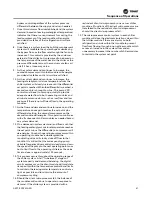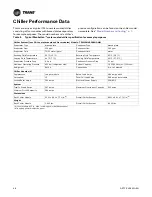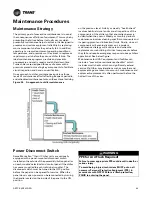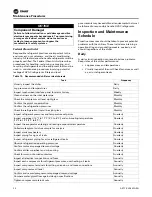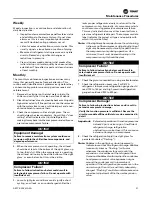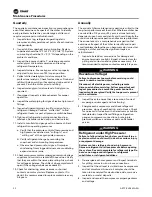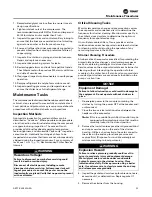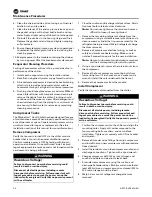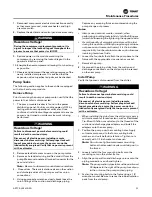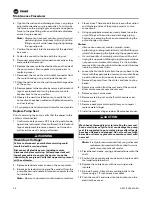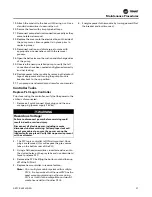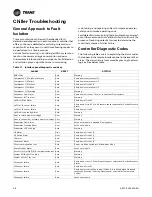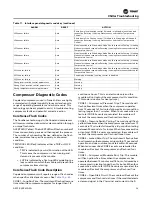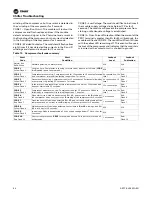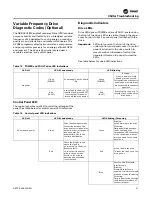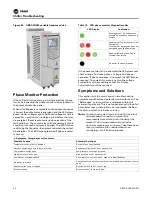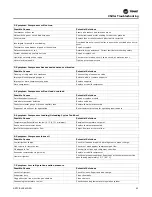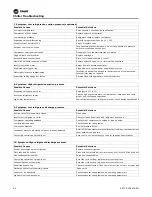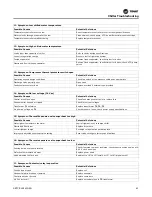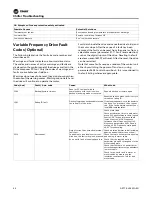
Maintenance Procedures
ARTC-SVX002A-EN
57
19. Attach the conduit to the box with the ring nut. Use a
standard screwdriver to secure the nut.
20. Secure the leads with crimp-type bell caps.
21. Reconnect pump electrical connections exactly as they
were notated at removal.
22. Replace the cover onto the electrical box on the side of
the pump motor. Ensure gasket is in place prior to
replacing cover.
23. Reconnect suction and discharge at unions with
appropriate size wrenches as with the removal
process.
24. Open the ball valves on the suction and discharge sides
of the pump.
25. Observe the newly installed pump to verify that all
connections have been seated and tightened correctly
and not leaking.
26. Restore power to the module by removing the lockout/
tagout equipment and turning the pump module
breaker back to the on position.
27. Turn pump on and record amp draws for your records.
Controller Tasks
Replace PLC Logic Controller
Prior to servicing the controller, verify that the power to the
chiller is disconnected.
1. Remove all quick-connect black plugs and the one
orange plug (power supply 24 Vac).
2. The PLC logic controller is DIN rail-mounted. Once
plugs are removed, this will expose the gray secure
tabs on the bottom rear of the PLC.
3. Using a flathead screwdriver, insert screwdriver into
the slotted holes on the gray tabs and use downward
force to release PLC.
4. Remove the PLC by lifting the bottom out and then up,
off of the DIN rail.
5. Replace new controller in reverse fashion.
Note:
On a multiple modular system with multiple
PLC’s, it is imperative that the new PLC has the
exact same programming as the remaining
PLC’s or it will not be compatible and would
create havoc within the other PLCs.
6. Energize power to the module by turning power ON at
the breaker and/or disconnect.
WARNING
Hazardous Voltage!
Failure to disconnect power before servicing could
result in death or serious injury.
Disconnect all electric power, including remote
disconnects before servicing. Follow proper lockout/
tagout procedures to ensure the power can not be
inadvertently energized. Verify that no power is present
with a voltmeter.





